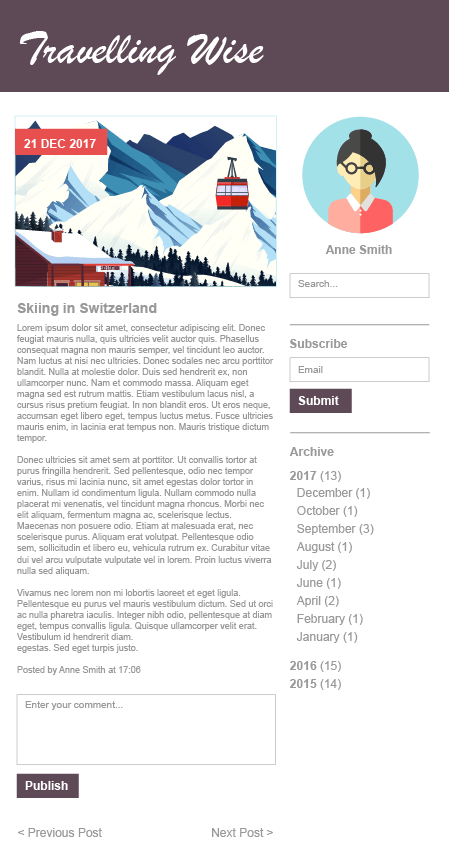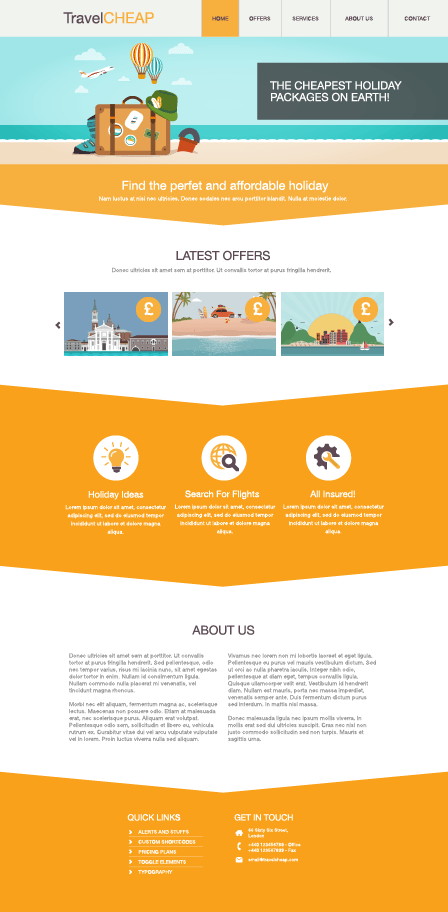Step 1 of 7what to include?
Blogs and Websites
The anatomy of a Blog
The word ‘blog’ is short for ‘weblog’. Blogs are a fantastic way of sharing information and opinions, and they are a great tool for starting debates and conversations. They tend to be written in a chatty or informal style and reveal something about the personality of the writer or the business.
- 1
- 2
- 3
- 4
- 5
1. BlogBlogs are web pages you can use to communicate things you care about.
2. Blog PostPosts are the individual pieces of commentary or stories on your blog.
3. CommentsYou can use blogs to invite readers to participate and share their views, too.
4. ImageryYou can illustrate them with images and embed videos.
5. ArchiveBlog posts are published one by one, so your readers can access previous articles – they are archived by date, category, author, tags and sub-categories.
If you’re part of a business, company or organization, your blog should be related to the product(s) or service(s) you provide, or the cause you promote. If you’re an individual, you have more flexibility when choosing a topic:
Blog about something you enjoyIf you aren’t excited about your topic, writing about it will be hard in the long term.
Blog about something with plenty of room for discussionA blog requires a lot of content to get going and remain interesting. You’ll be at this a long time so make sure you have plenty to talk about.
Choose a niche in which you can establish yourself as an authorityYou probably won’t be the first person to blog about the topic you choose. It’s almost guaranteed someone else has thought of it before you. Don’t fret about this, try come up with a unique angle or a different take on the subject. Do you have a reasonable chance of making your blog better than others talking about the same thing? The goal of any blog is to become the go-to resource for its topic or niche.
The anatomy of a Website
Websites tend to follow a standard format. It's very common to build four key sections and/or pages:
- 1
- 2
- 3
- 4
1. Homepage or Hero BannerInclude the name of your business and a simplified pitch – a few lines about what makes you unique and/or why customers should choose your business.
2. About UsProvide your company background. Also include customer testimonials, which help make your company seem more trustworthy and credible.
3. Products and ServicesInclude details about the products you sell or services you provide. On the page where you detail products or services, give a brief overview describing each,together with the cost.
4. Contact UsWhere you’re located, email, phone number, the hours you are open for business, and links to any social media accounts such as Twitter and Facebook should appear on this section or page. You should also embed a Google map of your location and include different ways of getting there (i.e. tube, train, car etc) if applicable.


